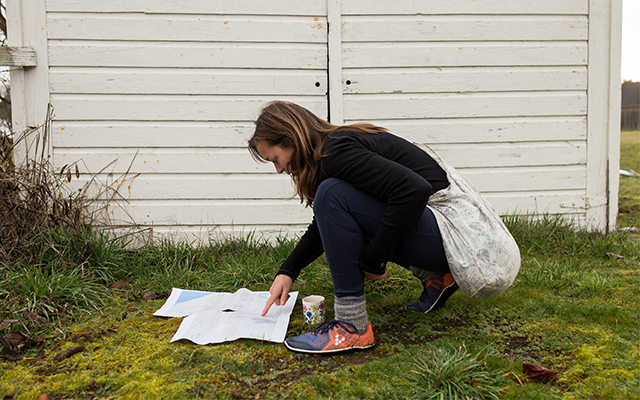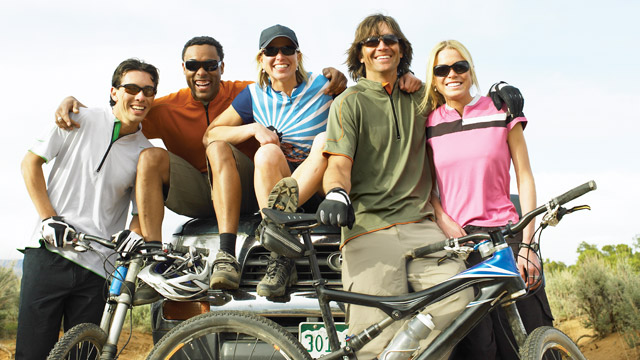Building community is easier (and more fun) than you might think. There are countless venues and means available for connecting with others: neighborhood garage sales, farmers’ markets, dog parks, crafts groups, play groups, and prayer groups. Here are a few more ways people are forging connections that you might not have heard about, with some ideas for how to take part.
1) Pocket Neighborhoods
Pocket neighborhoods — groupings of compact houses or apartments nestled around communal green spaces, such as pedestrian walkways, gardens, or conjoined backyards — provide a space for neighbors to strengthen webs of support and friendship.
Ross Chapin, a pocket-neighborhood architect, says, “These are settings where nearby neighbors can easily know one another; where empty nesters and single householders can find friendship or a helping hand.”
2) Little Free Libraries
Take a book or share a book and join the largest book-sharing movement in the world. Todd Bol built the first Little Free Library in Hudson, Wis., in 2009; today, there are more than 90,000 in 91 countries.
And Little Free Libraries go beyond promoting literacy; they connect people, too. When patrons pause on the sidewalk to browse, they are just as likely to strike up a conversation as to find their next read.
3) Food Swaps
Too much homemade kimchi in the pantry? Trade it for a jar of blackberry jam, a half-dozen duck eggs, or a fresh loaf of bread at a food swap — and mingle with other food lovers while you’re at it.
Kate Payne, author of The Hip Girl’s Guide to Homemaking, says food swaps are a win-win for everyone. “Sharing and trading food helps to maintain creative kitchen inventories, and it’s fun to meet others who enjoy growing, foraging, or making food.”
4) Roadside Gardens
Ron Finley founded L.A. Green Grounds with Florence Nishida and Vanessa Vobis when he noticed it was easier to buy liquor than lettuce in his neighborhood. After planting a vegetable garden on the edge of Finley’s yard, the trio freely shared the fruits of their labor with their neighbors.
If roadside gardens aren’t legal in your city, you can still plant a welcoming front-yard garden with a sign that says: “Free Veggies.”
5) Communal Cars
Your commute doesn’t have to be a drag. Sure, there are plenty of ride-sharing apps out there — think Lyft, Uber, and Zipcar — but you could also start a car-sharing club with your friends. With most personal cars sitting idle 22 hours a day, a communal car may be a great way to relieve some financial pressure and connect with your social circle.
6) Collective Biking
Attend a party on wheels! Noncompetitive group rides — including citywide bike rides and European-style gran fondo tours — are popular throughout the United States.
Take the Baltimore Bike Party. “One of the beauties of the bicycle is that most anyone can ride one,” says founder Tim Barnett. “That — combined with it being a free event with no registration — allows us to have young inner-city kids riding wheelies next to doctors and lawyers who drove in from around the country.”
7) Flash Mobs
Flash mobs are the community events of the digital age. Strangers organize online, meet at a designated time and place, then perform a random, entertaining act in public — like an elaborate dance to upbeat music.
And flash mobs can accommodate all kinds of energies. MedMob, a global meditation flash mob, organizes hourlong meditations in public places, exposing the unexposed to meditation and creating an environment where anyone can meditate.
8) Tool Sharing
Need a ladder, circular saw, or cement mixer — but just for a day or a week? Check out what you need from a tool library. One of the first tool-lending libraries in Berkeley, Calif., has more than 3,500 tools and is staffed with helpful “tool guys.”
To see if there’s a tool-lending library in your area — or to learn how to start one — check out the map and essential resources from Local Tools and Share Starter.
9) Community-Supported Art
Not all CSAs offer rutabagas, corn, or kale — some offer boxes of fresh local art. Community-supported art projects allow patrons to buy a “share,” then pick up boxes of art at intervals throughout the designated season.
The first community-supported art share was launched by Springboard for the Arts in St. Paul, Minn., in 2010. There are now CSAs in cities from Miami to Philadelphia to Lincoln, Neb.
This is adapted from “Building Community: Nine Ways to Connect and Transform,” which was originally published in our April 2014 issue.




This Post Has 0 Comments